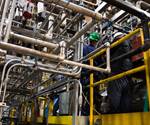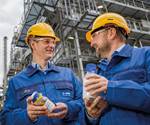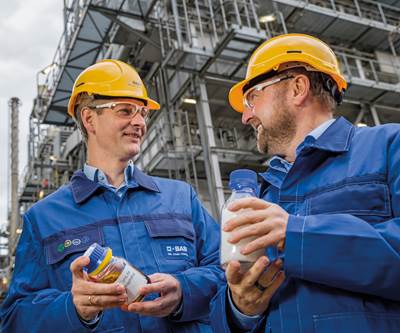Recycling: Expanding 'Circularity' through Advanced Recycling Technologies
Recycling and achieving circularity for materials is at the core of the plastics industry’s evolving sustainable business model. Advanced technologies will play a big role.
Sustainability ... What once was a niche business philosophy is now the driving force for businesses growth and development across all sectors. This could not be truer for the plastics industry, which is facing unprecedented scrutiny for mounting plastic pollution problems around the globe. For this reason, recycling and achieving circularity for materials is at the core of the plastics industry’s evolving sustainable business model.
What was once a display of voluntary stewardship, using recycled content is quickly becoming a requirement of doing business. Organizations like the Ellen McArthur Foundation have garnered significant commitments from consumer-product goods manufacturers (CPGs) as part of the New Plastics Economy Pact, which aims to meaningfully advance use of recycled content in packaging by 2025 (newplasticseconomy.org). In fact, when all these commitments are added together, there is serious question whether ample supply can be generated to meet that demand. Concerns relate to both quantity and quality.
Quantity can perhaps be address through investment in infrastructure and collection programs, but most companies seeking post-consumer recycle (PCR) content quickly realize the limitations of using mechanically recycled resins. Colorants, additives, and concerns over contamination can significantly limit where recycled content can be used in a company’s packaging portfolio. Sometimes these limitations can be addressed with additional processing; sometimes they cannot. But overcoming these limitations on a large scale will be necessary for many CPGs to hit their recycling targets by 2025.
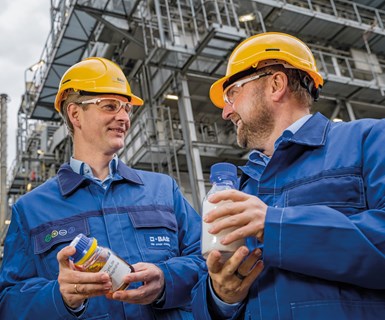
BASF is now manufacturing products based on chemically recycled plastic waste with its ChemCycling project.
Prime resin suppliers also recognize that sizable CPG commitments to use PCR will mean an equally sizable loss of business if they are not the ones supplying the recycled content in some fashion. The gravity of these commitments has sent virtually the entire plastics supply chain in pursuit of strategies that will help make these 2025 commitments a reality, from brand owners all the way up to resin suppliers. And recognizing that mechanical recycling alone will likely not get us there, they are looking at ways to expand the tools at our disposal in the recovery toolbox. This means looking at the technologies that will transform recycled plastics far beyond melting and repelletizing.
What was once a display of voluntary stewardship, using recycled content is quickly becoming a requirement of doing business.
The landscape of technologies that go beyond mechanical recycling today is ever growing, and many are on the cusp of reaching commercialization. There are many labels that have been used to refer to these technologies, and these labels have not always been consistently applied, which has contributed to some confusion. In this article, we will examine the different categories of technologies that take us beyond mechanical recycling, and their specific outputs.
What’s in a name? A lot
Finding the right term that encompasses all these technologies that go beyond mechanical recycling can be challenging. Perhaps the best high-level phrase yet developed to describe these technologies is “advanced recycling,” which was first introduced by the American Chemistry Council (ACC). The ACC defines advanced recycling as, “several different processes that use existing and emerging technologies that return post-use plastics to their basic chemical building blocks for creating a versatile mix of new plastics, chemicals, fuels, and other products.” The phrase “advanced recycling” accomplishes two things, it denotes that these are technologies that go deeper into the polymer than the mechanical recycling process. It also reinforces the concept that these processes, that while unfamiliar to the usual recycle value chain, are indeed a form of recycling.
In a study published in 2019 by Closed Loop Partners, the case is made for why these technologies will be crucial for increasing the plastics recycling rate, and ultimately changing the ecology of the plastics industry to be more circular. This report (short.ptonline.com/closedloop) creates three buckets for these types of technologies that take plastics beyond mechanical recycling. Those buckets include: purification, decomposition and conversion. In discussing the many types of advanced recycling technologies, we’ll use these three categories to help explore the range of the technologies and their various outputs.
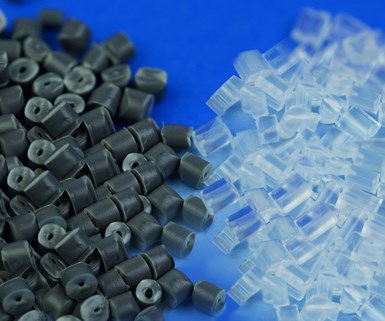
Milliken partnered with PureCycle Technologies to help restore used polypropylene (PP) plastic to 'virgin-like' quality using a physical separation and purification process.
Purification Technologies: These are technologies that use a solvent or chemical to precipitate the polymer out of a solution, leaving behind colorants, additives and other contaminants. Two of the most common types of purification technologies are solvent extraction and chromatography. In these processes, the output is a clean and clear polymer. But because the polymer remains unchanged by this technique at the molecular level, it does not have the same properties as prime or virgin resin. It retains the heat histories of melting and remelting, which can alter the molecular weight and viscosity of the plastic, affecting its performance during processing and use. However, additives can be used to enhance properties to get the purified recycled resin back to near virgin-like properties.
The benefits of this technology are many. While you don’t have the molecular structure of a virgin polymer, you have many of the characteristics of virgin polymers that allow for a wide range of use. With all contaminants removed, these plastics can qualify for food-contact applications, regardless of the source of the material. With the colorants and additives also removed, the recycled polymer can easily be used across a CPG company’s packaging portfolio, color matched to the branding.
This process is more energy intensive than mechanical recycling but less than chemical recycling or depolymerization. A good rule of thumb on energy consumption for advanced recycling technologies is, the farther you take the polymer back to its original form, the more energy will be required.
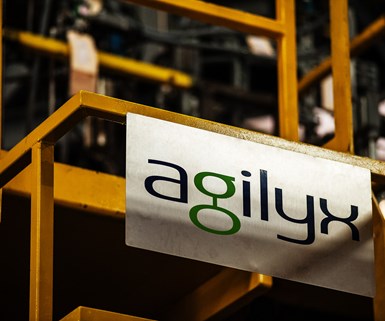
Agilyx uses both decomposition and conversion technologies that can produce a variety of products, including naphtha, jet fuel, synthetic crude oil, and styrene monomer, depending on the feedstock.
Decomposition Technologies: These technologies include systems that are commonly referred to as chemical recycling. Resins like polyesters and polystyrene are well suited for chemical recycling technologies. Specific technologies like methanolysis would fall into this category. In a chemical or decomposition process, the complex chains that make up polymers are unzipped. The chemical bonds are broken, leaving monomers and other chemical building blocks to make new plastics. In this process, additives and colorants fall out of the process. Those neat chemicals and monomers can then be put back into reactors to make a recycled polymer identical to its virgin counterpart. Because these technologies yield the same products found in the supply chain of prime resin suppliers, this will be the enabling technology that meaningfully brings resin suppliers into the circularity loop.
Considering the scale of these technologies is important as well. When commercialized, these technologies will operate at the scale of a chemical plant, meaning they will require volumes of material that far outweigh what is moving through the system for mechanical recycling today. The challenges of consolidating the right feedstocks for these systems is something that many are trying to solve in anticipation of a host of these systems reaching commercial scale in the next few years.
While life-cycle analysis shows that these technologies have a higher environmental footprint than mechanical recycling and, often, purification technologies, this class of technology still has an overall lower footprint than virgin-resin production because the fossil-fuel extraction process is avoided.
Conversion Technologies: The third category of advanced recycling technologies are those technologies that convert plastic products into other sellable, tradable commodities. These end products can range from petrochemicals and fuels like diesel, crude-oil-type products, naphtha and industrial waxes. Unlike the other two categories of technologies in advanced recycling that are broadly recognized as recycling, conversion technologies can count toward recycling, but do not always. How the products of conversion are handled will determine whether the process counts toward recycling or not. For example, a technology that produces a diesel product used as fuel may not count by definition as recycling. One of the most widely recognized definitions of recycling is contained in ISO 18604:2, which defines recycling of packaging as:
Reprocessing, by means of a manufacturing process, of a used packaging material into a product, a component incorporated into a product, or a secondary (recycled) raw material; excluding energy recovery and the use of the product as a fuel.
According to the Ellen MacArthur Foundation’s interpretation of this definition, “This includes both mechanical (maintaining polymer structure) and chemical (breaking down polymer structure into more basic building blocks, for example via chemical or enzymatic processes, that are then built up again into new materials) recycling processes. It explicitly excludes technologies that do not reprocess materials back into materials but instead into fuels or energy.”
So, for conversion technologies to count as “recycling” there will need to be close accounting that shows the outputs of the system were sold for further cracking and refining for inputs to producing new plastics.
Road to Commercialization
These advanced recycling technologies have long existed at the pilot scale. They have been touted as the recycling technologies of tomorrow, but perpetually on the horizon. Whether it was weak oil pricing, low virgin resin prices, or low PCR demand, the key drivers that would enable these technologies to scale to commercial levels just never seemed to line up. That is, until now. The projected demand for PCR from brands is causing a major supply-chain realignment in order to make 2025 PCR goals achievable. Demand has become the overriding factor for investment in all corners of building up recycling capacity and capability, and it’s happening throughout the plastics supply chain.
Examples of commercialization of technologies in all three advanced recycling categories include companies like:
• PureCycle Technologies: This is a technology that was developed by Proctor & Gamble. Once the facility has completed construction in Hanging Rock, Ohio, PureCycle will produce some of the highest quality PCR polypropylene available on the market. The technology uses a solvent-extraction process, making this a purification technology.
• Regenyx: A joint venture between Agilyx and Americas Styrenics (AmSty), claims to be the world’s first commercial-scale chemical recycling facility in the world. Located in Tigard, Ore., this facility is breaking down both rigid and expanded polystyrene into styrene monomer, which is fed into American Sytrenics products. The process is referred to as PolyUsable recycling. This technology is an example of a decomposition technology.
• Brightmark Energy: This technology converts a wide range of plastics into hydrocarbon products. The first facility, which is being constructed in Ashley, Ind., will divert 200 million lb of plastic waste a year. The facility will produce 18 million gal of diesel and 5 million gal of wax. Brightmark is an example of technology in the conversion category of advanced recycling technologies.
There are many more examples of advanced recycling technologies being built all around the globe.
With low-cost virgin resin today, the recycled plastics produced from these systems will be more expensive than virgin resin. However, with the influence of organizations like the Ellen MacArthur Foundation, brand owners are being held accountable to their stated PCR commitments. Many predict this will lead to a decoupling of pricing for recycled content from prime, effectively creating two separate markets for these materials. Brand owners will be forced to seek PCR suppliers despite a price premium over virgin.
In recent Congressional testimony, the ACC highlighted that $4.2 billion has been invested in last 18 months to advance both mechanical and chemical recycling. As these investments come into play, they will significantly transform what our reclamation and recycling industry looks like. These new advanced recycling technologies will be instrumental in bringing both new recycled plastics feedstocks, as well as players, into the recovery system. And, if we are to meet the goal of circularity, these are the technologies that will enable us to achieve that at an industry-scale.
About the Author: Kim Holmes is the owner and principal consultant of 4R Sustainability, a consulting firm dedicated to working with industry to advance recycling and sustainability goals. Prior to forming her company, she was v.p. of sustainability for the Plastics Industry Association (PLASTICS). Kim works with clients to demonstrate innovative recovery solutions, develop sustainable communications and business development strategies, and serves as a technical expert. Contact: kholmes@4RSustainability.com.
Related Content
Shredding Thin Film: How to Do It Right
While many processors recoil at this task, a little know-how in shredding equipment, processing, and maintenance should add the necessary confidence.
Read MoreSkipping the Pellet for Efficient Recycling in Molded Engineering Plastics Applications
AGS Technology leverages deep experience in molding with recycled engineering materials for automotive and heavy equipment parts.
Read MoreBreaking News From NPE2024
Here is a firsthand report of news in injection molding, extrusion, blow molding and recycling not previously covered.
Read MoreICYMI: July Roundup
BBQ, fireworks and best practices: Here’s a quick look at the top articles from July you might have missed.
Read MoreRead Next
New Closed Loop Study Takes Closer Look At Innovative Recycling Tech
There are reportedly at least 60 technology providers developing transformational technologies that purify, decompose or convert waste plastics into renewed raw materials.
Read MoreBASF Develops Pilot Products Made From Chemically Recycled Plastics
As a next step, BASF plans to make the first products from the ChemCycling project commercially available.
Read MorePlastics-to-Oil Recycler Finds New Niche in Polystyrene
Agilyx is in an innovative area of recycling: extracting value from waste plastic streams. The company has expanded to develop the first full-circle chemical recycling of PS.
Read More
